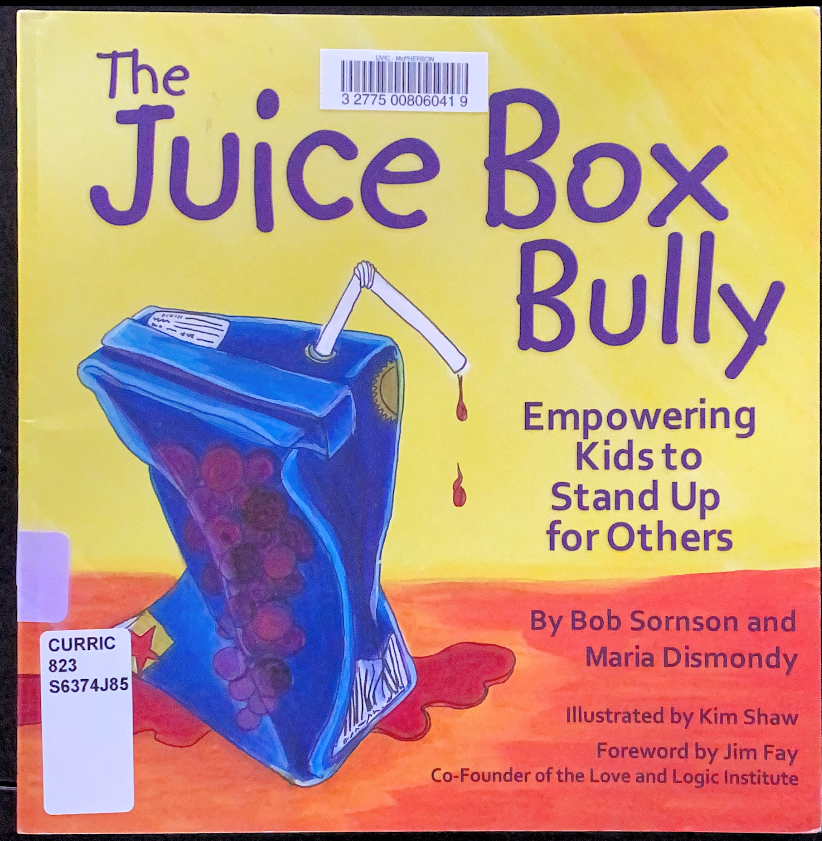The first book I chose to review is The Juice Box Bully by Bob Sornson, Maria Dismondy and illustrated by Kim Shaw. This book was written in order to teach kids about bullying and the importance of standing up for yourself and others.

The story itself is about a student named Pete who arrives at his new school. Pete is considered the bully in this story and he has several encounters with his classmates that create division in the classroom. One student brings to Pete’s attention that everyone in the class had made a “promise” to each other – that they will stand up for each other in the face of bullying and they will not participate in bullying of any form. Pete confesses that he has been bullied in the past and this is why he chooses to reciprocate the behavior. Pete realizes his classmates have no intentions of bullying him, instead they choose to offer him kindness and forgive him for his actions. In the end, Pete becomes friends with his classmates and chooses to make “the promise.”
The authors provide both the perspective of Pete as well as his classmates who are bullied by him. This way, students will recognize the actions and characteristics of the bully, as well as those of the victim. Students can decipher what actions of bullying look like and what actions of forgiveness look like.
I think this is a great resource because it not only presents a relatable scenario for children, but more importantly it demonstrates how they should react in this situation. An important aspect of this book that separates it from others alike is that there is never an adult or teacher presence to solve the problem. As much as kids should go to an adult when they have an issue, I think it is also realistic to say that there may not always be an adult around in the heat of a moment. In this book, the students must approach Pete themselves and as a group in order to stick up for each other. This teaches students that they have a voice and are capable of solving problems in a respectful manner (but of course this may not always be the case). I would say this book would be suit grades 1-3 as it uses simple language and very distinct bullying scenarios that kids will pick up on easily.

Critiques: As much as I think this book takes a different approach to the impact of bullying, it also does not. It follows the usually plotline of: new student arrives at school, they bully other students, it turns out to be a misunderstanding, they solve the issues everyone is happy, the end. I think there are many more unique situations than this one, in which bullying isn’t as evident as purposefully spilling a juice box on your classmate’s shirt. It seems like there are many kids who would not think of themselves as a “bully” because there actions aren’t as obvious. Hidden bullying tendencies are a whole other discussion in themselves, but I think they should be talked about more. When kids are young, they usually don’t recognize their own bullying tendencies because it hasn’t been revealed to them that what they’re doing is wrong. Although I think this book is effective to have in the classroom, we still have a long way to go in this topic of literature.

Leave a Reply
You must be logged in to post a comment.